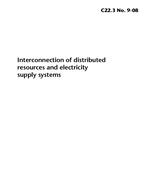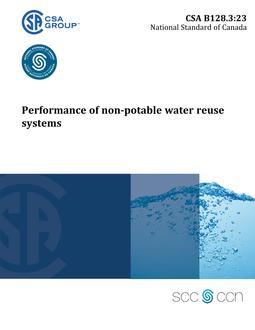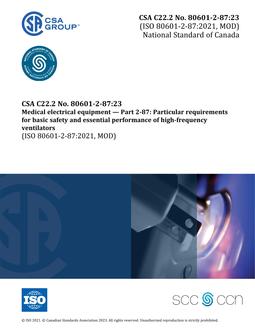
CSA C22.3 NO. 9-08 (R2015)
Click here to purchase
Preface
This is the first edition of CSA C22.3 No. 9, Interconnection of distributed resources and electricity supply systems, one of a series of Standards issued under the Canadian Electrical Code, Part III.
1 Scope
1.1
This Standard specifies the technical requirements for the interconnection of distributed resources (DR) and distribution systems up to 50 kV line to line. This Standard covers all distributed resource technologies with an aggregate capacity of 10 MW or less at the point of common coupling (PCC).
1.2
This Standard does not define the maximum DR capacity or the upper voltage limit for installations that are interconnected with a single PCC or connected to a given feeder.
1.3
This Standard covers the interconnection of
(a) inverter-based DR systems and distribution systems where the PCC is at medium voltage; and
(b) generator-based DR systems and distribution systems where the PCC is at low or medium voltage.
See CAN/CSA-C22.2 No. 257 for interconnections of inverter-based DR systems and distribution systems where the PCC is at low voltage.
1.4
The objective of this Standard is to specify minimum requirements for the
(a) safety of persons;
(b) continuity of service; and
(c) protection of property.
1.5
This Standard does not apply to secondary network connections and does not address
(a) protection of the power producer’s facility;
(b) operating requirements for DR units;
(c) intentional islanding;
(d) transmission system impact and upgrades;
(e) planning, design, or operation of the distribution system or DR system;
(f) metering, rates, tariffs, and other contractual or commercial issues associated with interconnection; or
(g) interconnection of distributed resources and distribution systems that are not ultimately connected to a province-wide or regional electricity grid (i.e., remote locations).
1.6
In CSA Standards, “shall” is used to express a requirement, i.e., a provision that the user is obliged to satisfy in order to comply with the standard; “should” is used to express a recommendation or that which is advised but not required; “may” is used to express an option or that which is permissible within the limits of the standard; and “can” is used to express possibility or capability. Notes accompanying clauses do not include requirements or alternative requirements; the purpose of a note accompanying a clause is to separate from the text explanatory or informative material. Notes to tables and figures are considered part of the table or figure and may be written as requirements. Annexes are designated normative (mandatory) or informative (non-mandatory) to define their application.
Product Details
- Edition:
- 1st
- Published:
- 06/01/2008
- ISBN(s):
- 1554364221
- Number of Pages:
- 50
- File Size:
- 1 file , 1.4 MB
- Product Code(s):
- 2419222, 2419121, 2419121


